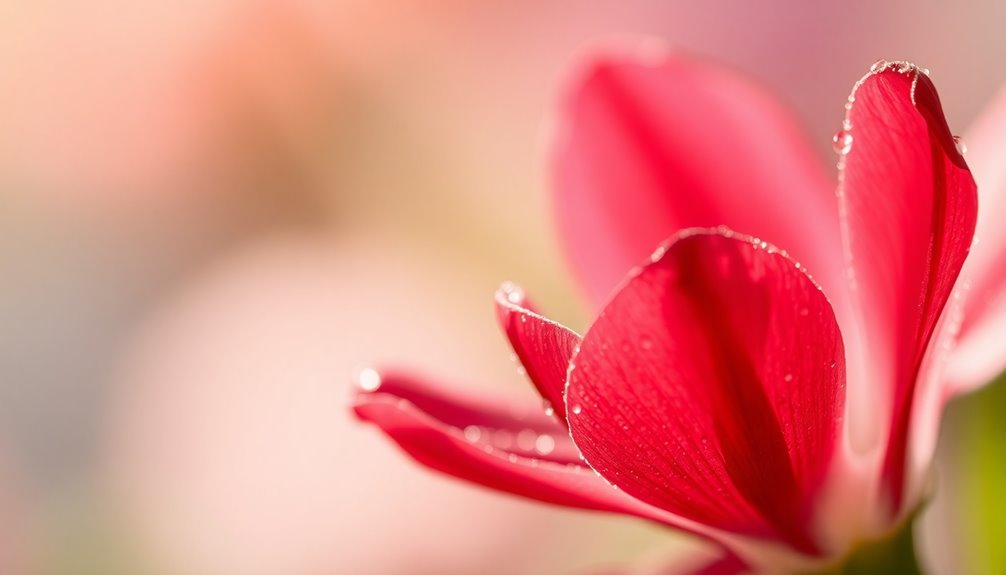Your first period, also known as menarche, marks an important milestone in your life. It usually happens between ages 11 and 14, bringing physical and emotional changes. You might notice breast development, pubic hair growth, and mood swings as your body prepares. Learning how to manage symptoms like cramps and tracking your cycle is essential. It's a journey filled with new experiences, and there's so much more to discover about what this means for you!
Key Takeaways
- Menarche typically occurs between ages 11 and 14, with the average onset around 12 to 12½ years in the U.S.
- Physical changes before menarche include breast development, pubic hair growth, and initial irregular menstrual cycles.
- Common symptoms during menarche can include cramps, bloating, and mood swings, manageable through various self-care strategies.
- Consult a healthcare provider if menstruation hasn't started by age 15 or if there are severe symptoms disrupting daily life.
- Educational resources are available to help individuals understand menarche and manage their menstrual health effectively.
What Is Menarche?
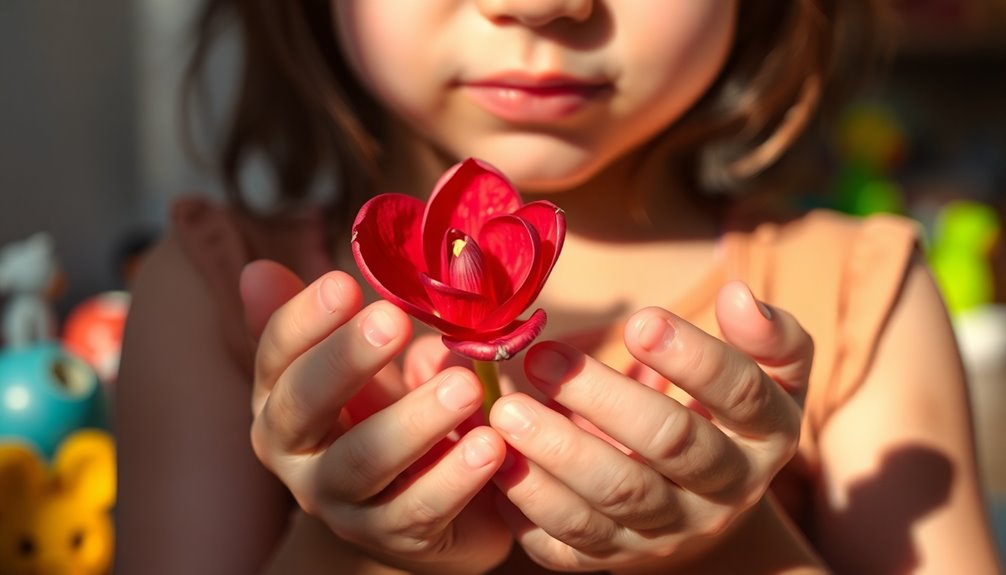
Menarche marks a significant milestone in a female's life, as it's the first occurrence of menstruation and signals the start of reproductive capability. Typically happening between ages 11 and 14, the average age for menarche in the U.S. is around 12 to 12½ years.
Before your first period, you might notice physical changes like breast development and the growth of underarm and pubic hair. Vaginal discharge may also occur about 6 months to a year prior to menarche. This change is driven by hormonal changes, particularly the release of estrogen and progesterone, which prepare your body for the menstrual cycle.
Initially, your cycles may be irregular, but they usually stabilize within 2-3 years as your body adjusts.
Who Does Menarche Affect?

Menarche affects you if you're assigned female at birth, usually kicking off around age 12 but varying between 9 and 15.
This time can bring physical changes, like breast development, and emotional ups and downs that impact your well-being.
Understanding how these factors interact can help you navigate this significant shift in your life.
Age Range Variability
When does a young girl typically experience her first period? Menarche usually occurs between ages 11 and 14, with the average age in the U.S. being around 12 to 12½.
However, age range variability means some girls may start as early as 9 or as late as 15. Genetics plays a significant role in determining this timing, as family history can influence when menarche begins.
Additionally, environmental factors like nutrition, body composition, stress levels, and physical activity can also impact the onset.
Often, breast development and vaginal discharge appear months before the first period, signaling the approach of menstruation.
Physical and Emotional Impact
The onset of menstruation marks a significant moment in a young girl's life, impacting both her physical and emotional well-being. Menarche typically occurs between ages 11 and 14, bringing about physical changes like breast development and body hair growth, which can challenge your self-image.
You might experience emotional impacts too, such as mood swings, anxiety, or confusion about these changes. Family history can play a role, leading you to compare your experience with those of relatives.
Additionally, physical symptoms like cramps and bloating can disrupt daily activities. During this shift into puberty, having support from friends and family is essential to navigate these changes with confidence and ease.
What Age Does Menarche Typically Occur?

Most girls experience their first period, or menarche, between the ages of 11 and 14, with the average occurring around 12 to 12½ years old in the United States.
However, some may see their first period as early as age 9 or as late as 15, which is still within the normal range.
Some girls may experience their first period as early as 9 or as late as 15, both still considered normal.
Typically, menarche follows noticeable physical changes that signal puberty, such as breast development and the growth of pubic hair.
Family history plays a role in determining the age at which you'll experience menarche, along with environmental factors like nutrition and body composition.
On average, you can expect menarche about 2-3 years after these initial signs of puberty emerge.
Symptoms and Causes of Menarche

As you approach menarche, several symptoms signal the body's readiness for its first menstrual cycle.
You'll notice physical changes like breast development and pubic hair growth, which can happen 6 months to a year before your first period. Hormonal changes may lead to symptoms such as cramping, bloating, and mood swings in the days leading up to menarche.
You might also experience vaginal discharge, indicating your body is preparing for menstruation. The timing of these changes often depends on genetics, with an average onset age of around 12 to 12½ years in the U.S.
However, menarche can occur as early as 9 or as late as 15, influenced by various factors, including body composition and environment.
How Menarche Affects the Body
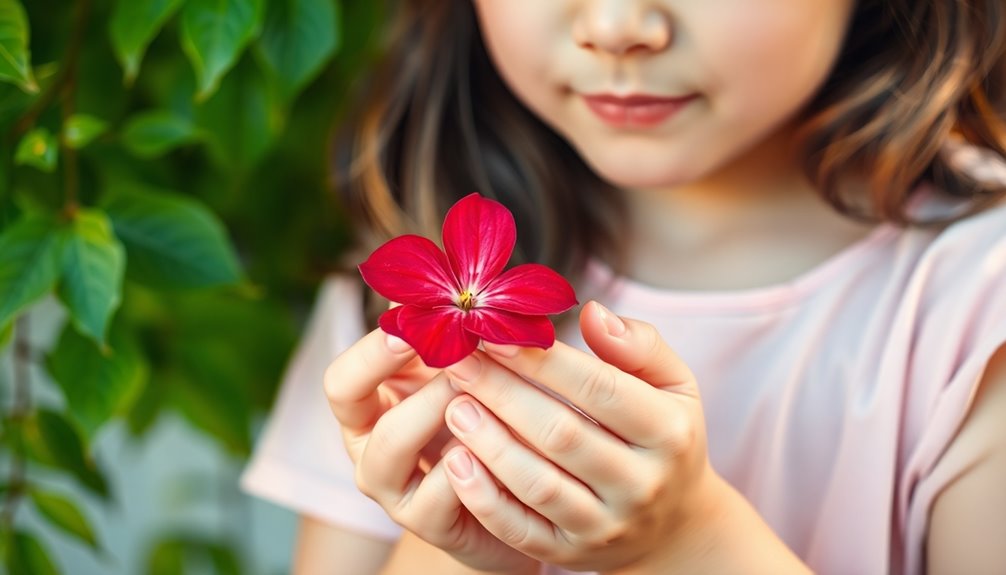
When you experience menarche, your body undergoes significant changes that mark the shift into adulthood and reproductive capability. The average age for your first period is around 12, although it can happen earlier or later.
Before menarche, you notice physical changes such as breast development and the growth of pubic and underarm hair, signaling your body's readiness. Hormonal changes kick in, releasing estrogen and progesterone, which thicken the uterine lining in preparation for a possible pregnancy.
Your initial menstrual cycles may be irregular, lasting from 2 to 7 days, as your body adjusts to this new routine. It can take several years to establish a consistent menstrual cycle, but these changes are a natural part of growing up.
Managing Menarche and Symptoms
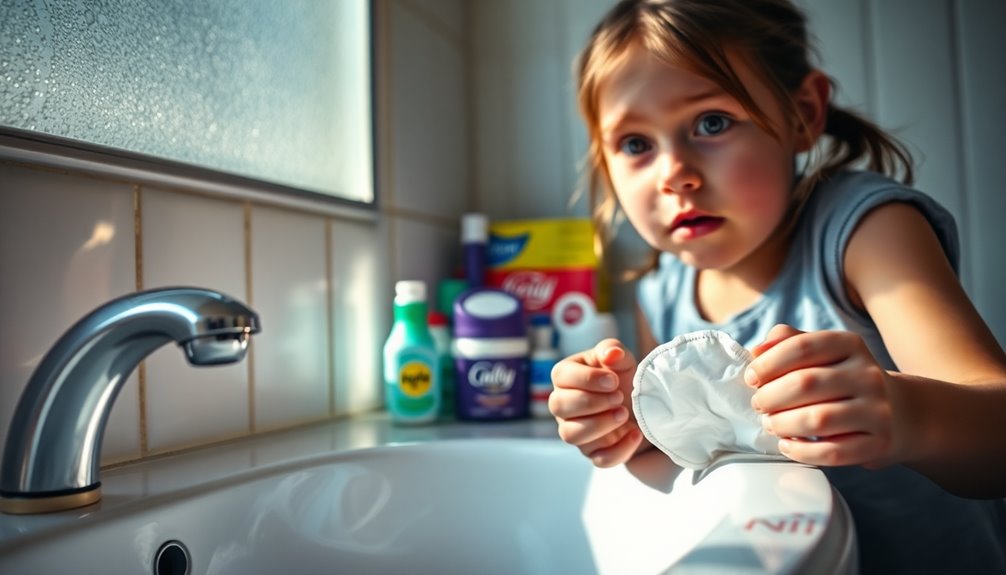
Managing the onset of menarche can feel overwhelming, but understanding your options can make this change smoother.
To handle menstrual flow, consider using pads, tampons, or menstrual cups—pads are often the easiest choice for beginners.
Consider using pads, tampons, or menstrual cups to manage menstrual flow, with pads being the simplest option for beginners.
It's crucial to track your menstrual cycles, as this helps you identify patterns, predict periods, and spot any irregularities.
You might experience common symptoms like cramps, bloating, and mood swings, which can be managed with warm baths, exercise, or over-the-counter pain relief.
Don't hesitate to consult a gynecologist for guidance on managing your menstrual health. They can provide valuable support and education during this shift, making it easier to navigate your new experience and guarantee your well-being.
When to Consult a Healthcare Provider
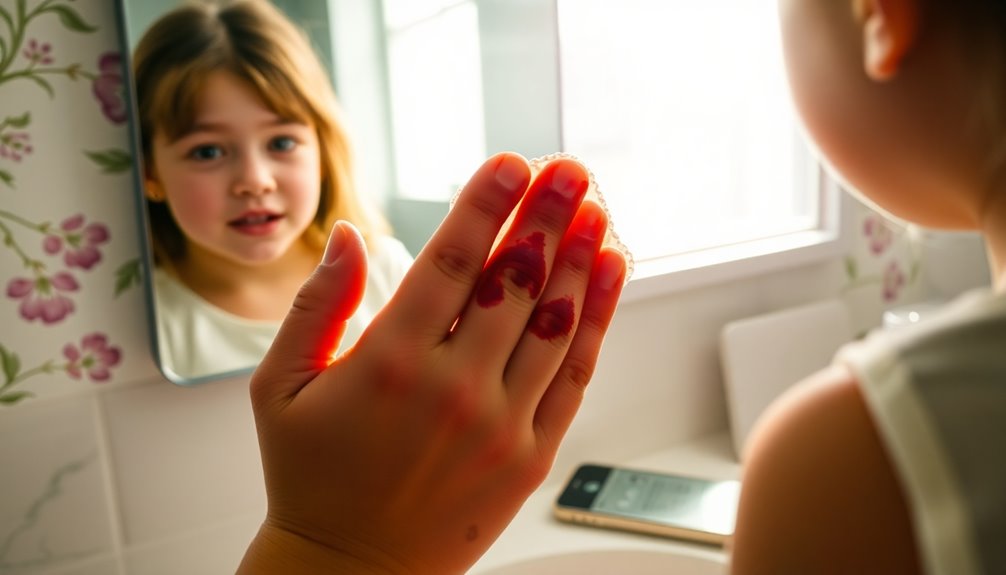
How do you know when it's time to consult a healthcare provider about your menstrual health?
If your first period hasn't started by age 15, it's wise to seek evaluation. Additionally, if you haven't gotten your period within 2-3 years after breast development, consider discussing it with a doctor to rule out any underlying medical issues.
Early onset of menstruation, occurring before age 9, also warrants a consultation.
If you experience heavy bleeding that requires you to change pads or tampons every hour, or if your menstrual flow lasts more than a week, don't hesitate to reach out.
Finally, if severe PMS symptoms disrupt your daily life, talking to a healthcare provider can help you find effective management options.
Preparing for Your First Period

Getting ready for your first period is an exciting milestone, and being prepared can make the experience much smoother.
Preparing for your first period is a significant milestone that can be made easier with the right preparation.
It's important to gather feminine hygiene products before menstruation starts. Here are three essential items for your period preparation kit:
- Menstrual Products: Stock up on pads, tampons, or menstrual cups—whichever you prefer.
- Pain Relievers: Having pain relievers on hand can help with cramping and discomfort.
- Change of Underwear: Accidents can happen, so keep an extra pair in your bag.
Be aware of signs of puberty, like breast development and vaginal discharge, which may signal your first period is near.
Discuss your feelings and expectations with a trusted adult to feel more confident about this new chapter in your life.
Resources for Menstrual Health

What resources are available to support your understanding of menstrual health?
The Cleveland Clinic offers valuable educational materials on menarche and the changes that accompany it. Regular check-ups with your healthcare provider are essential for monitoring your menstrual health and addressing any concerns about your periods.
By tracking menstrual cycles, you can spot patterns or irregularities, making discussions with your healthcare provider more effective. The American College of Obstetricians and Gynecologists (ACOG) also provides pamphlets covering various reproductive health topics, including menarche.
Frequently Asked Questions
Do Girls Get Spotting Before Their First Period?
Yes, girls can experience spotting before their first period.
This usually happens as a sign of hormonal changes in your body, often occurring 6 months to a year before menarche.
The spotting is typically light and may appear brown or pink, indicating that your uterine lining is starting to shed.
While it's a normal part of puberty, if you notice heavy spotting or unusual symptoms, it's a good idea to consult a healthcare provider.
What Is Period 🔴?
Imagine a moon cycling through phases, marking the passage of time. That's what your period is—a monthly rhythm signaling the body's readiness for potential new life.
When you don't conceive, your body sheds the unused uterine lining, resulting in menstruation. This process usually starts between ages 10 and 15 and lasts 2 to 7 days.
Understanding your period helps you manage symptoms and recognize any changes, keeping your health in check.
What Happens Right Before a Girl Gets Her First Period?
Right before you get your first period, your body goes through several changes.
You might notice breast development and the growth of pubic or underarm hair. Increased vaginal discharge is common too, signaling hormonal shifts.
You could experience mood swings, bloating, or cramping, and even some skin changes like pimples.
How Long After Growing Pubic Hair Do Periods Start?
Growing pubic hair is like the first chapter in a book—it's a sign of changes ahead.
Typically, you'll notice your period start within 2-3 years after you begin developing pubic hair, but it varies for everyone.
You might also experience vaginal discharge about 6 months to a year before your first period.
Tracking these changes helps you understand your body's timeline better, so keep an eye on those signs!
Conclusion
As you commence this journey into womanhood, remember that your first period is like a rite of passage, a blooming flower in the garden of life. Embrace the changes with open arms, knowing that you're not alone in this experience. With a little preparation and self-care, you can navigate this new chapter with confidence. So, let your inner strength shine bright, and don't hesitate to reach out for support when you need it. You've got this!
